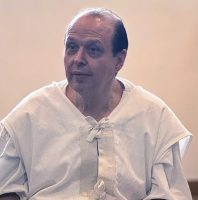A Texas judge has temporarily halted the execution of Robert Roberson, 57, who was sentenced to death in 2003 for the death of his two-year-old daughter, Nikki Curtis. Less than two hours before the execution was set to take place, a Travis County judge issued a restraining order, citing the need for Robert Robertson to testify at a state legislative hearing next week. Roberson’s case has garnered widespread attention, with his supporters arguing that outdated science and undiagnosed autism played a significant role in his conviction.
Despite Robert Robertson’s claims of innocence and ongoing legal battles, Texas authorities have pushed for the execution to proceed. The Texas attorney general has already filed an appeal to overturn the restraining order. This case has raised important questions about the use of “shaken baby syndrome” as a basis for convictions and capital punishment, as well as broader issues related to justice and the death penalty.
Execution Halted Amid Controversy Over Shaken Baby Syndrome
Robert Roberson was scheduled to be executed at 18:00 local time on Thursday for the murder of his daughter, Nikki Curtis. The case revolved around “shaken baby syndrome,” a medical diagnosis that has been widely used in child abuse cases, but which has faced increasing scrutiny in recent years. Robert Robertson’s legal team and supporters have long maintained that Nikki died of complications related to pneumonia, not from injuries caused by abuse, as prosecutors alleged.
The decision to block the execution came just 90 minutes before it was due to take place. A Travis County judge issued a temporary restraining order, citing a subpoena from the Texas House panel requiring Roberson to testify at a legislative hearing scheduled for October 21. This intervention was highly unusual and has sparked a renewed debate on the reliability of medical evidence used in Robert Robertson’s conviction. Despite this ruling, Texas Attorney General Ken Paxton has filed an appeal, seeking to overturn the restraining order and allow the execution to proceed.
Calls for Clemency and the Role of Outdated Science
Robert Robertson’s case has drawn significant attention from a wide range of individuals and groups calling for clemency. A bipartisan coalition of 86 Texas lawmakers, medical experts, legal professionals, and advocates—including bestselling author John Grisham and pro-death penalty Republicans—argued that Robert Robertson’s conviction was based on outdated science. The diagnosis of “shaken baby syndrome,” now referred to as abusive head trauma, was commonly used in the early 2000s, but modern medical research has revealed that other factors, such as accidental falls or preexisting medical conditions, can cause similar symptoms.
Grisham, a vocal supporter of Roberson, expressed his concerns about the case in September, stating, “In Robert’s case, there was no crime, and yet we’re about to kill somebody for it in Texas.” This sentiment has been echoed by others who argue that Roberson was wrongfully convicted due to the lack of understanding of medical conditions like pneumonia and the impact of certain medications. Roberson’s legal team also pointed to his autism, which was undiagnosed at the time, as a factor that may have influenced his behavior and contributed to the suspicion of abuse.
Autism and Robert Robertson’s Defense: A Complicated Legal Battle
One of the central arguments presented by Robert Robertson’s defense team is that his autism, which was undiagnosed at the time of Nikki’s death, may have played a significant role in the events that followed her tragic passing. Roberson’s lack of emotional expression during police interrogations and hospital interactions led to further suspicions, according to his lawyers. Autism, a condition that can affect how individuals communicate and express emotions, was not understood as well in 2003, and Roberson’s behavior may have been misinterpreted as a sign of guilt.
Robert Robertson’s lawyers also argued that Nikki’s death may have been caused by a combination of her accidental fall, the medication she was taking, and underlying health conditions like pneumonia. They claim that the “shaken baby syndrome” diagnosis, which played a crucial role in his conviction, was made without fully considering alternative explanations for her injuries. However, prosecutors have maintained that new evidence does not disprove their case and that the child’s injuries were consistent with abusive head trauma.
A Broader Debate on Capital Punishment and Medical Evidence
The temporary halt of Roberson’s execution has reignited a larger debate about the use of capital punishment in cases involving medical evidence that has since been called into question. While the diagnosis of “shaken baby syndrome” was once widely accepted, evolving medical knowledge has raised doubts about its reliability in some cases. This has led to concerns that individuals like Roberson could be executed based on flawed or outdated science.
The Texas Board of Pardon and Paroles voted 6-0 earlier this week to deny Roberson’s clemency petition, and Governor Greg Abbott has so far refused to grant a 30-day reprieve, a move he has only made once during his tenure. Roberson’s supporters, including Brian Wharton, the lead detective who investigated the case, have expressed regret over the handling of the case. Wharton told the Associated Press, “I will forever be haunted by the role I played in helping the state put this innocent man on death row.”
As Roberson awaits his fate, the legal and medical questions surrounding his case continue to stir controversy, highlighting the potential flaws in the justice system when it comes to complex medical diagnoses and capital punishment.














